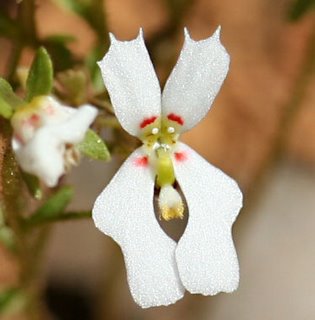Charming!

Just because it's trigger season, and I live in Stylidium central, here's one of my favourites that is flowering now. The Lovely Trigger Plant, Stylidium amoenum (amoenus is Latin for charming or showy). In a genus of exquisite plants, you have to be special to earn a specific epithet like that.
(It appears to have been collected by Robert Brown, botanist on Mathew Flinders voyage. I think he had more than a passing acquaintance with curious and attractive flowers, but in those days Stylidium were classified as Lobeliaceae, though Brown had his doubts).
It is happily abundant in Jarrah forest over quite a large area of the S.W., but seems sadly to be a Phytophthora cinnamomi martyr. Grows up to half a metre tall, and flowers for a long period from late spring.


